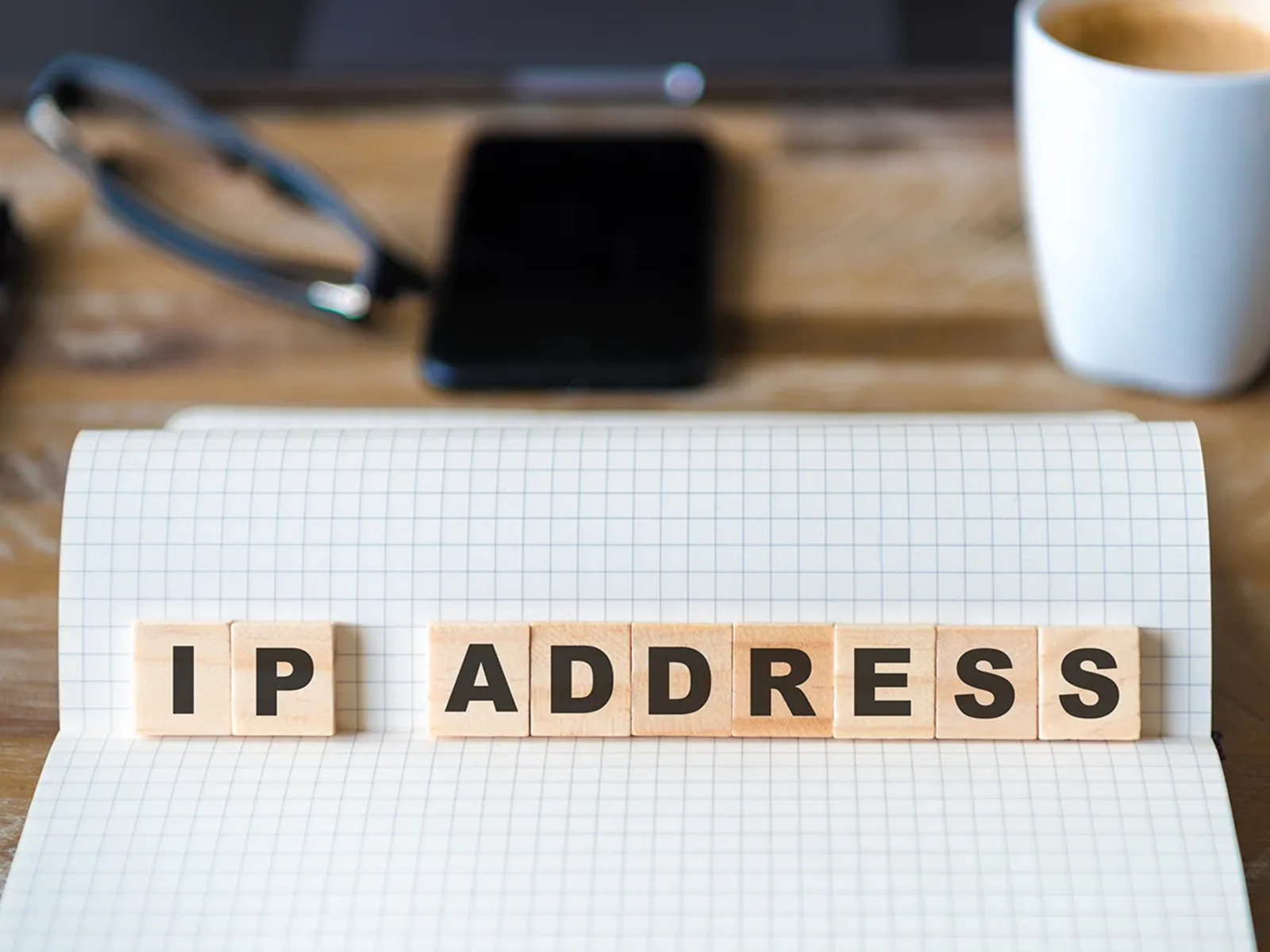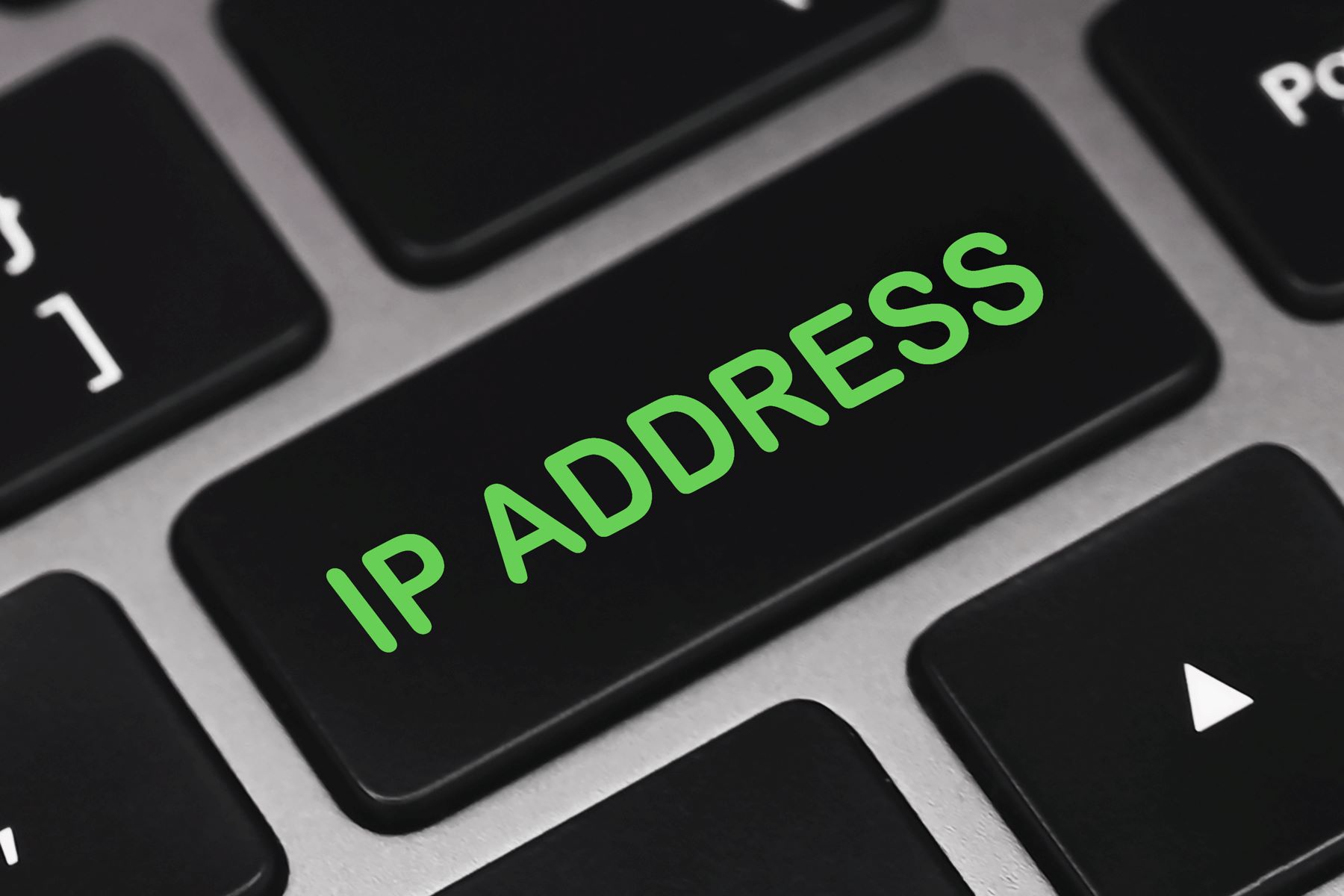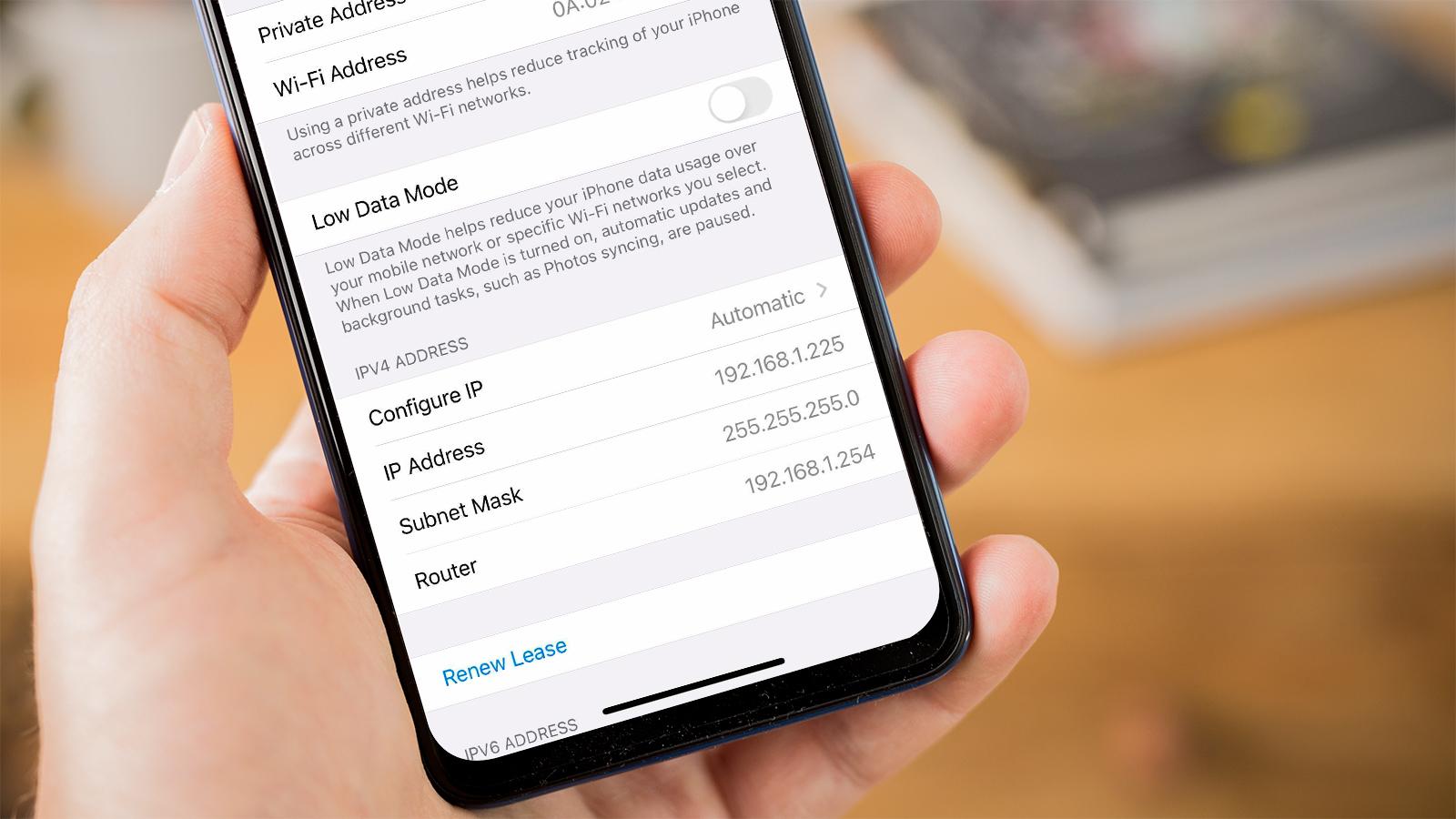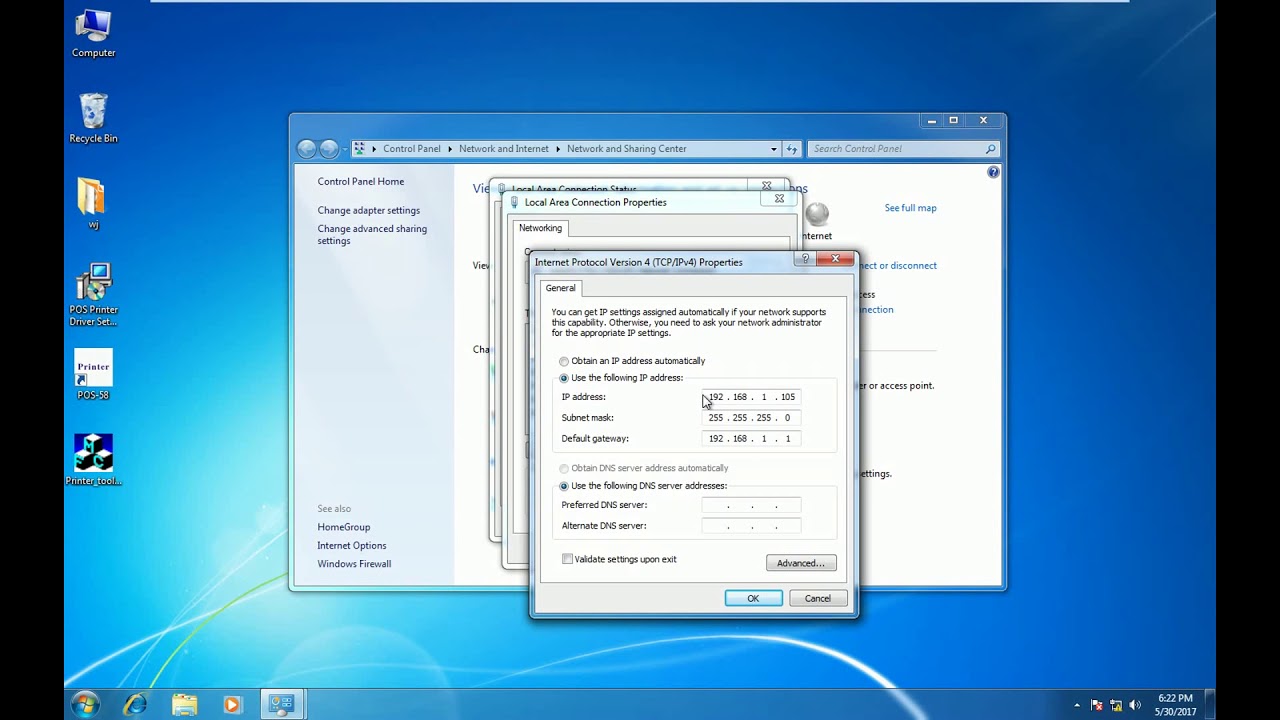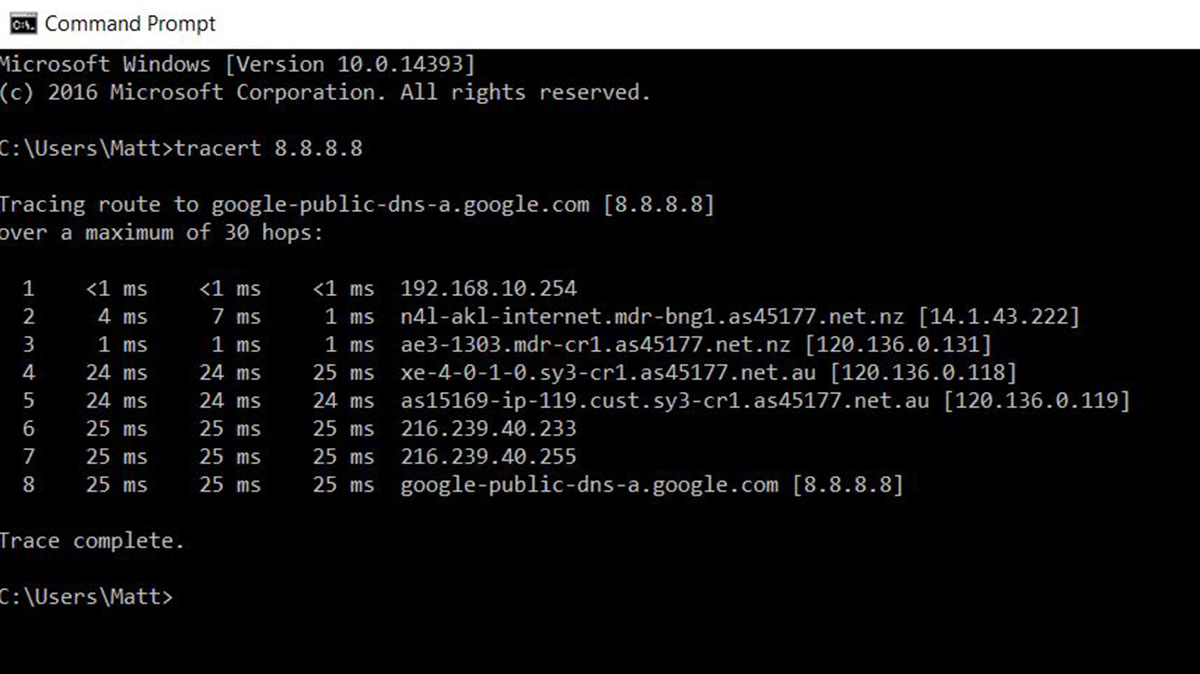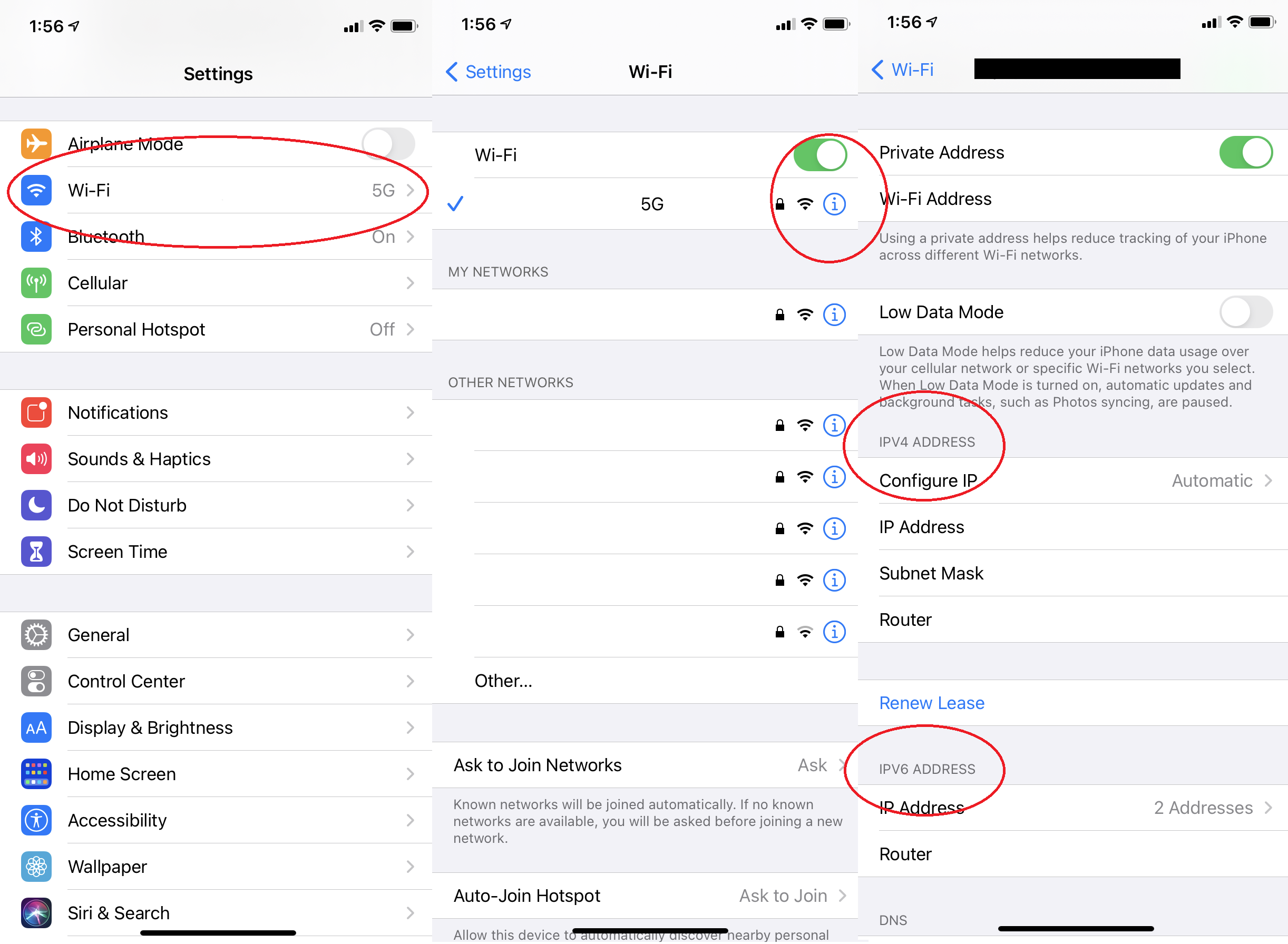What Is My IP Address?
Have you ever wondered what your IP address is? Your IP (Internet Protocol) address is a unique numerical label assigned to your device when it connects to the internet. It serves as a digital identifier for your device, allowing it to communicate with other devices over the internet.
Every device that connects to the internet, whether it’s a computer, a smartphone, or a tablet, has an IP address. This address acts as the device’s virtual “street address” in the vast network of interconnected devices that make up the internet.
Your IP address is essential for various internet-related activities, such as sending and receiving emails, browsing websites, streaming videos, and downloading files. It enables you to establish connections and exchange data with other devices and servers on the internet.
An IP address consists of a series of numbers, typically separated by periods. For example, an IP address may look like this: 192.168.0.1. Each number in the address represents a specific network or host identifier.
IP addresses are categorized into two types: IPv4 (Internet Protocol version 4) and IPv6 (Internet Protocol version 6). IPv4 addresses are the most common and use a 32-bit numeric format, allowing for approximately 4.3 billion unique addresses. On the other hand, IPv6 addresses are 128-bit long and enable a significantly larger number of unique addresses.
Knowing your IP address can be useful in various situations. For example, it allows you to troubleshoot network connectivity issues, configure network settings, and set up remote access to your device. Additionally, it can help you identify potential security threats or unauthorized access attempts.
There are several ways to find your IP address. You can use online tools, check the network settings on your device, or simply perform a quick search on a search engine like Google. These methods will provide you with your device’s public IP address, which is the address visible to other devices on the internet.
Alternatively, if you want to find the IP address assigned to your device on a local network, you can access the network settings or use the command prompt (on Windows) or terminal (on Mac or Linux) and type “ipconfig” or “ifconfig,” respectively.
Understanding your IP address is the first step towards navigating the world of internet connectivity. It helps you establish connections, access online services, and interact with other devices. So, next time you wonder “What is my IP address?”, you’ll know exactly where to find the answer.
Understanding IP Addresses
To truly comprehend the significance of your IP address, it’s essential to have a basic understanding of how IP addresses work.
IP addresses are composed of two main components: the network identifier and the host identifier. The network identifier identifies the network to which the device is connected, while the host identifier distinguishes the specific device within that network.
IPv4 addresses, the most widely used type of IP addresses, consist of 32 bits divided into four sets of numbers. Each set can range from 0 to 255, separated by periods. For example, 192.168.0.1 is a common IPv4 address format.
In contrast, IPv6 addresses, which are becoming more prevalent, are 128 bits long and use a hexadecimal format. This allows for a significantly greater number of unique addresses compared to IPv4.
IP addresses are vital for facilitating communication between devices on the internet. By relying on these addresses, data packets can be routed from the source device to the destination device through various intermediate networks.
There are two types of IP addresses: public and private. Public IP addresses are unique identifiers assigned by an internet service provider (ISP) to a device that is directly accessible from the internet. Private IP addresses, on the other hand, are assigned to devices within a private network and are not accessible from the internet.
The rapid growth of internet usage and the limited availability of IPv4 addresses have led to the implementation of Network Address Translation (NAT). This system allows multiple devices in a private network to share a single public IP address when communicating with the internet.
IP addresses are crucial for routing data packets efficiently across networks. Devices use these addresses to send and receive data, ensuring that information reaches its intended destination.
Understanding IP addresses can also help in troubleshooting network issues. By analyzing IP addresses and network configurations, IT professionals can identify and resolve connectivity problems, such as routing errors or conflicts with IP address assignments.
Moreover, IP addresses play a significant role in network security. By monitoring IP addresses and network traffic patterns, network administrators can detect and mitigate potential security threats, such as suspicious activities or unauthorized access attempts.
In summary, IP addresses are the backbone of internet communication. They allow devices to initiate and receive data transmissions, and enable efficient routing across networks. By comprehending IP addresses, you can gain a deeper understanding of how information flows through the digital landscape.
Types of IP Addresses
IP addresses can be classified into different types based on their purpose and scope. Understanding these types can give you a clearer picture of the various addressing schemes used in different network environments.
1. Public IP Addresses: Public IP addresses are globally unique and assigned by Internet Service Providers (ISPs) to devices connected directly to the internet. These addresses allow devices to communicate with other devices on different networks. Public IP addresses are essential for servers, websites, and other internet-connected services that need to be accessible from anywhere in the world.
2. Private IP Addresses: Private IP addresses are used within private networks, such as home or office networks. These addresses are not reachable from the internet directly. Private IP addresses are reserved for internal network use and are assigned by the network administrator. They allow devices within the same network to communicate with each other, enabling sharing of resources like printers or file servers.
3. Dynamic IP Addresses: Dynamic IP addresses are automatically assigned to devices by an ISP’s server when a connection is established. These addresses have an expiration time and can change periodically. Dynamic IP addressing is commonly used in residential internet connections where a large pool of IP addresses can be shared among users to conserve address space.
4. Static IP Addresses: In contrast to dynamic IP addresses, static IP addresses are manually assigned to devices and remain constant over time. Static addresses are typically used for servers, network devices, or any device that requires a fixed and predictable address for remote access or hosting services. Static IP addresses allow for more reliable communication since the address does not change.
5. Loopback IP Address: The loopback IP address, 127.0.0.1, is a special IP address reserved for testing and troubleshooting purposes. It allows a device to send network traffic to itself, making it useful for diagnosing network-related issues locally.
6. Link-Local IP Address: Link-local IP addresses, such as those starting with 169.254.x.x, are automatically assigned to devices when they are unable to obtain an IP address from a DHCP (Dynamic Host Configuration Protocol) server. These addresses are commonly used in local networks when there is a problem with the network configuration or when no DHCP server is available.
Understanding the different types of IP addresses helps in managing network resources, troubleshooting connectivity problems, and securing network infrastructure. Depending on your specific needs, you can determine which type of IP addresses is most suitable for your network environment.
How to Find Your IP Address
There are various methods to find your IP address, whether you’re using a computer, smartphone, or another internet-connected device. Knowing your IP address can be helpful when troubleshooting network issues, configuring network settings, or accessing remote devices or services. Here are a few ways to find your IP address:
1. Using Online IP Address Lookup Tools: Numerous websites provide IP address lookup tools that display your public IP address. Simply open your preferred web browser, search for “What is my IP address,” and click on one of the results. The website will then display your IP address, allowing you to easily copy and use it as needed.
2. Checking Network Settings on Windows: If you’re using a Windows operating system, you can find your IP address by navigating to the “Network Connections” or “Network and Sharing Center” section in the Control Panel. From there, click on the active network connection, and the IP address will be listed under the “IPv4 Address” or “IPv6 Address” field.
3. Checking Network Settings on Mac: On a Mac, you can find your IP address by going to “System Preferences” and selecting the “Network” icon. Choose the active network connection, and your IP address will be displayed under the “Status” section.
4. Using Command Prompt or Terminal: On both Windows and Mac operating systems, you can also use the command prompt or terminal to find your IP address. Open the command prompt (Windows) or terminal (Mac), type “ipconfig” (Windows) or “ifconfig” (Mac/Linux), and press Enter. Your IP address will be listed under the appropriate network connection.
5. Using Mobile Device Settings: For smartphones and tablets, you can find the IP address in the device’s network settings. The exact steps may vary based on the operating system. Generally, you can navigate to the “Settings” menu, select “Wi-Fi” or “Network & Internet,” and find the IP address listed under the connected network.
It’s important to note that the above methods will provide you with your public IP address, which is the address visible to other devices on the internet. If you want to find the IP address assigned to your device on a local network, you can follow similar steps but look for the “Local IP Address” or “LAN IP Address” instead.
Finding your IP address is a simple and essential task that can empower you to troubleshoot network issues, configure network settings, and access remote devices or services. By knowing your IP address, you can navigate the digital landscape with confidence and make the most of your internet-connected devices.
Advantages and Limitations of IP Address Lookup Tools
IP address lookup tools can provide valuable information about an IP address, such as its geographical location, internet service provider, and domain name. These tools offer several advantages, but they also have some limitations to keep in mind.
Advantages of IP Address Lookup Tools:
1. Geographical Information: IP address lookup tools can provide general geographical information about an IP address’s location. This can be useful for various purposes, such as targeted advertising, content localization, and understanding website traffic demographics.
2. Network Troubleshooting: IP address lookup tools can assist in troubleshooting network issues by providing information about the network infrastructure associated with an IP address. This can help identify bottlenecks, determine the origin of network connectivity problems, and investigate potential network attacks.
3. Fraud Detection: IP address lookup tools can be valuable for fraud detection and prevention. By analyzing IP addresses, businesses can identify suspicious activities, such as multiple accounts originating from the same IP address, and take necessary actions to protect their systems and users.
4. Website Analytics: IP address lookup tools can contribute to website analytics by providing insights into the geographical distribution of website visitors. This information can assist in optimizing marketing campaigns, enhancing user experience for specific regions, or identifying untapped markets.
5. Content Localization: IP address lookup tools can help tailor content based on the visitor’s location. This enables websites to provide localized information, language preferences, or country-specific promotions, improving user engagement and conversion rates.
Limitations of IP Address Lookup Tools:
1. Inaccuracies: IP address lookup tools rely on databases that may not always provide accurate or up-to-date information. The location provided by an IP address lookup tool may not always match the physical location of the device due to factors such as VPNs, proxies, or dynamic IP assignments.
2. Privacy Concerns: The use of IP address lookup tools raises privacy concerns as it allows for the potential tracking or profiling of individuals based on their IP addresses. It is crucial to handle IP address data responsibly and adhere to privacy regulations to protect user privacy.
3. Limited Granularity: IP address lookup tools provide information at a general level, such as city or region. They may not provide precise location details or street-level accuracy. For certain applications that require precise location data, additional methods, such as GPS or user-provided address information, may be necessary.
4. Restriction to Public IP Addresses: IP address lookup tools primarily focus on public IP addresses, which are visible to the internet. They may not provide information for devices behind a private network, such as devices connected to a router using Network Address Translation (NAT).
Despite these limitations, IP address lookup tools remain valuable resources for understanding general geographical information, detecting potential issues, and optimizing online experiences. It is vital to use them judiciously and supplement their findings with other data sources when required.
Understanding Geolocation
Geolocation refers to the process of determining the geographical location of a device or entity using various sources of data. It involves using information such as IP addresses, GPS signals, Wi-Fi networks, and cell tower triangulation to estimate the physical location of an object.
Geolocation technology has become increasingly prevalent and is widely used in various applications and services. Understanding how geolocation works can shed light on how your location is determined when browsing the internet or using location-based services.
Geolocation primarily relies on IP addresses to determine the approximate location of a device. IP address databases are maintained by organizations that associate IP addresses with geographical regions or specific locations. When you visit a website or use an application, the server can extract your IP address and query these databases to estimate your location.
GPS (Global Positioning System) is another essential component of geolocation. GPS relies on a network of satellites orbiting the Earth to triangulate the position of a GPS-enabled device. This technology is widely used in navigation systems, mapping applications, and location-based services on smartphones.
Wi-Fi networks also play a role in geolocation. Wi-Fi access points can gather information about nearby Wi-Fi-enabled devices, including their signal strength and unique identifiers. This data can be combined with known databases of Wi-Fi access points to estimate the device’s location based on the Wi-Fi networks it can detect.
In addition to IP addresses, GPS, and Wi-Fi, cell tower triangulation is another method employed in geolocation. Mobile devices communicate with cellular towers to establish connections, and the signal strength of nearby towers can be used to triangulate the approximate location of the device.
It is important to note that geolocation techniques have their limitations and may not always provide precise results. Factors such as network congestion, signal interference, or outdated databases can affect the accuracy of geolocation data. Additionally, geolocation is typically an estimation rather than an exact location, as it relies on available data and algorithms to make educated guesses about a device’s position.
Geolocation has numerous applications and benefits. It enables location-based services, such as ride-hailing apps, weather forecasts, and personalized recommendations. It also plays a crucial role in enhancing cybersecurity by providing insights into the origin of network traffic and potential threats.
However, it is important to consider privacy implications associated with geolocation data. The collection and use of location data raise concerns about user privacy and the potential for misuse or unauthorized access. It is crucial for organizations to handle geolocation data responsibly and adhere to relevant privacy regulations.
Overall, geolocation technology has transformed the way we interact with our devices and navigate the digital world. By understanding how geolocation works, we can better appreciate the benefits and limitations of location-based services and make informed decisions regarding our privacy and security online.
How Geolocation Determines Your Location
Geolocation technology utilizes various methods to determine your location, combining multiple sources of data to estimate where you are physically located. These methods involve analyzing data from IP addresses, GPS signals, Wi-Fi networks, and cell tower triangulation to pinpoint your position. Let’s take a closer look at how geolocation determines your location.
1. IP Address: One of the primary methods used in geolocation is analyzing your IP address. Every device connected to the internet is assigned a unique IP address, which contains information about the device’s network and location. Geolocation databases associate IP addresses with specific regions or locations, allowing services to estimate your approximate location based on your IP address.
2. GPS Signals: GPS technology plays a fundamental role in determining precise location information. GPS-enabled devices, such as smartphones, receive signals from multiple satellites orbiting the Earth. By measuring the time it takes for the signals to reach the device, along with the distance from each satellite, the device can calculate its exact position, typically with an accuracy of a few meters.
3. Wi-Fi Networks: Wi-Fi networks also contribute to geolocation. Wi-Fi access points generate signals that devices can detect, and these signals contain unique identifiers. Geolocation services can map the locations of Wi-Fi access points and compare them to the signals detected by your device. By analyzing the signal strength and the known location of the Wi-Fi access point, the system can estimate your approximate location based on the nearby Wi-Fi networks you can detect.
4. Cell Tower Triangulation: Mobile devices communicate with nearby cellular towers to establish connections. Cell tower triangulation involves measuring the signal strength from multiple cellular towers and using the information to estimate the device’s location. By comparing the signal strengths and the known locations of nearby towers, geolocation services can triangulate the approximate position of the device.
It’s important to note that geolocation technologies rely on combining data from multiple sources to improve accuracy and provide a more comprehensive picture of your location. By utilizing different methods in conjunction with one another, geolocation services can compensate for the limitations of individual sources.
Factors such as network congestion, signal interference, and outdated databases can affect the accuracy of geolocation. Additionally, geographical databases used for IP address lookup or Wi-Fi access point mapping are periodically updated to maintain accuracy, but there may still be discrepancies.
Overall, geolocation technology has revolutionized numerous industries, including navigation, logistics, advertising, and social media. By utilizing a combination of IP addresses, GPS signals, Wi-Fi networks, and cell tower triangulation, geolocation services are able to provide valuable information about your location, enabling personalized experiences and location-based services.
How to Find Your Location Based on Your IP Address
Your IP address can provide valuable information about your location. Geolocation services use databases that associate IP addresses with geographical regions to estimate where you are physically located. If you want to find your location based on your IP address, here are a few methods you can try:
1. Online Geolocation Tools: There are numerous online platforms and websites that offer IP address geolocation services. Simply search for “IP address geolocation” on your preferred search engine, and you will find various options. These tools allow you to input your IP address, and they will provide an estimated location based on their databases.
2. GeoIP Libraries and APIs: If you are a developer or have some technical knowledge, you can make use of GeoIP libraries or APIs (Application Programming Interfaces). These resources allow you to integrate geolocation functionality into your own applications or scripts. Various programming languages, such as Python, Java, and JavaScript, have libraries and APIs available to help retrieve geolocation data based on an IP address.
3. IP Geolocation Databases: Some IP geolocation databases are available for download or purchase. These databases contain mappings between IP addresses and geographical locations. By using these databases, you can build your own geolocation applications or perform offline geolocation lookups.
4. Network Tools and Commands: Network tools and commands like “traceroute” or “ping” can provide information about the routers and networks your traffic is passing through. While these tools may not directly give your physical location, they can give insights into the path your network traffic takes, which can sometimes help identify the general region or network you are connected to.
It’s important to keep in mind that geolocation based on IP addresses has limitations. Geolocation estimates are not always 100% accurate, and there can be discrepancies due to factors like virtual private networks (VPNs), proxies, or the use of dynamic IP addresses. Additionally, if you are using a mobile device, your location may be determined more accurately through GPS signals rather than IP address geolocation.
Moreover, privacy considerations come into play when using IP address geolocation services. The use of IP addresses to estimate location raises concerns about potential tracking and profiling. It is crucial to handle and protect sensitive geolocation data responsibly, adhering to relevant privacy regulations.
Overall, finding your location based on your IP address can be done through online geolocation tools, libraries and APIs, IP geolocation databases, or network tools and commands. These methods can provide a general idea of your location, but it’s important to be aware of the limitations and privacy considerations associated with IP address geolocation.
Privacy and Security Implications of IP Address and Location Tracking
The tracking of IP addresses and location data brings both privacy and security implications. While IP address and location tracking can offer valuable insights and functionalities, it is important to be aware of the potential risks and concerns associated with this practice.
Privacy Concerns:
1. Personal Tracking: IP address and location tracking can allow individuals or organizations to track your online activities and movements. This raises concerns about privacy invasion and the potential for abuse or unauthorized surveillance.
2. Profiling and Targeted Advertising: Location data can be used to create profiles of users and their preferences, enabling targeted advertising or influencing content recommendations. While this may enhance personalization, it also raises concerns about user profiling and manipulation.
3. Third-Party Sharing: Sharing IP address and location data with third parties can be a common practice in various online services. However, it is crucial to understand how this data is being shared, who has access to it, and how it may be further used or sold to other entities.
4. Data Security Risks: The collection and storage of IP address and location data introduce potential vulnerabilities. If mishandled, this data can be exploited by malicious actors, leading to identity theft, fraud, or unauthorized access to sensitive information.
Security Implications:
1. Cyberattacks and Hacking: Malicious actors may exploit IP address and location data to launch targeted cyberattacks or gather information for social engineering. Location information can assist attackers in identifying potential targets or crafting convincing phishing or spear-phishing attempts.
2. Physical Security Risks: Revealing location data can pose physical security risks, especially if an attacker can track an individual’s movements or identify their precise location. This information can be used for stalking, harassment, or other malicious purposes.
3. Device and Network Vulnerabilities: The exposure of IP addresses and location data can make devices or networks more susceptible to targeted attacks. Attackers can use this information to identify vulnerable systems, launch attacks, or gain unauthorized access to sensitive resources.
Protecting Your Privacy and Anonymity:
1. Use VPNs: Virtual Private Networks (VPNs) can help protect your privacy by encrypting your internet traffic and masking your IP address. This makes it more difficult for third parties to track your online activities or determine your location.
2. Understand Privacy Policies: When using online services, read and understand their privacy policies. Be aware of how your IP address and location data are collected, used, and shared. Only share your data with trusted entities that have transparent privacy practices.
3. Opt-Out and Configure Privacy Settings: Some services allow users to customize their privacy settings, granting or restricting access to location data. Take advantage of these options to minimize the amount of location information shared.
4. Regularly Update and Secure Devices: Keep your devices and software up to date with the latest security patches. Enable security features such as firewalls and ensure strong passwords or biometric protections are in place.
5. Be Mindful of Online Activities: Be cautious about the information you share online, minimize disclosing personal details unnecessarily, and avoid connecting to potentially insecure networks. Practice good online hygiene to reduce the risk of exposure.
Understanding the privacy and security implications of IP address and location tracking is crucial for making informed choices and protecting your online presence. By being proactive and mindful of privacy practices, you can maintain a greater level of control over your personal information and minimize the potential risks associated with IP address and location tracking.
Protecting Your Privacy and Anonymity Online
As internet usage continues to grow, it is vital to take steps to protect your privacy and anonymity online. Safeguarding your personal information and maintaining anonymity can help prevent identity theft, protect sensitive data, and minimize the risk of being tracked or monitored. Here are some strategies to protect your privacy and anonymity online:
1. Use Virtual Private Networks (VPNs): VPNs create a secure encrypted tunnel between your device and the internet. They hide your IP address and encrypt your internet traffic, making it difficult for anyone, including your internet service provider or potential eavesdroppers, to monitor or track your online activities.
2. Regularly Update and Secure Devices: Ensure your devices, including computers, smartphones, and tablets, have the latest software updates and security patches installed. Enable built-in security features such as firewalls and use strong, unique passwords or biometric authentication methods to protect your accounts from unauthorized access.
3. Utilize Privacy-Enhancing Browsers and Plugins: Consider using privacy-focused browsers, such as Firefox with privacy-enhancing plugins like Privacy Badger or uBlock Origin. These tools can block web trackers, limit cookies, and provide safeguards against intrusive online ads, thereby enhancing your privacy while browsing.
4. Opt-out and Configure Privacy Settings: Check the privacy settings of the online services and platforms you use. Review their data collection and sharing practices and opt-out of any unnecessary data collection. Configure privacy settings to restrict the amount of personal information shared publicly.
5. Be Mindful of Social Media Sharing: Think twice before sharing personal information on social media platforms. Avoid disclosing sensitive details such as your full address, phone number, or date of birth, as this information can be exploited by individuals with malicious intent. Adjust the privacy settings on your social media accounts to limit who can access your personal information.
6. Use Encrypted Messaging and Email Services: Opt for messaging apps and email services that offer end-to-end encryption, ensuring that only intended recipients can access your messages or emails. Examples of encrypted messaging apps include Signal and WhatsApp, while ProtonMail and Tutanota are privacy-focused email providers.
7. Be Cautious with Public Wi-Fi Networks: Avoid accessing sensitive information or conducting financial transactions on public Wi-Fi networks, as they may be insecure and susceptible to eavesdropping. If you must use public Wi-Fi, consider using a VPN to encrypt your internet traffic and protect your data.
8. Regularly Clear Your Browsing Data: Clear your browsing history, cookies, and cached data regularly to remove traces of your online activities. This reduces the potential for targeted advertising and minimizes the likelihood of your browsing behavior being tracked.
9. Educate Yourself on Online Security Practices: Stay informed about current online security threats and best practices. Regularly update your knowledge of common techniques used by cybercriminals, such as phishing, social engineering, or malware attacks. By being aware and educated, you can recognize and avoid potential threats.
10. Consider Anonymous Browsing: If you require a higher level of anonymity, consider using privacy-oriented browsers like Tor. Tor routes your internet traffic through a network of volunteer-operated servers, making it difficult to trace your online activities back to your device.
By implementing these privacy protection measures, you can enhance your online privacy and maintain a greater level of anonymity. Remember, privacy is an ongoing effort, and it is important to stay vigilant and adapt to emerging threats and privacy concerns in the digital landscape.
Conclusion
Understanding IP addresses and geolocation is crucial in today’s interconnected world. IP addresses serve as digital identifiers for devices and play a crucial role in internet communication. Geolocation technologies utilize various methods, including IP addresses, GPS signals, Wi-Fi networks, and cell tower triangulation, to estimate a device’s physical location.
While IP address and location tracking can offer numerous benefits, there are important privacy and security considerations to keep in mind. The collection and use of IP address and location data raise privacy concerns, as they can be used to track individuals, create profiles, and enable targeted advertising. Additionally, the exposure of this data can pose security risks, such as cyberattacks or physical threats.
To protect privacy and maintain anonymity online, it is essential to utilize tools and practices that safeguard personal information. Using VPNs, securing devices, configuring privacy settings, and being mindful of online activities can help mitigate privacy risks. Understanding and implementing these measures can help individuals maintain control over their personal information and reduce the chances of being tracked or monitored.
Ultimately, striking a balance between the benefits and potential risks of IP address and location tracking is key. As technology continues to advance, it is important for individuals and organizations to stay informed, adapt privacy practices, and be proactive in protecting their privacy and security online.









